AIM-9 Sidewinder: the revolutionary heat-seeking air-to-air missile that almost never was
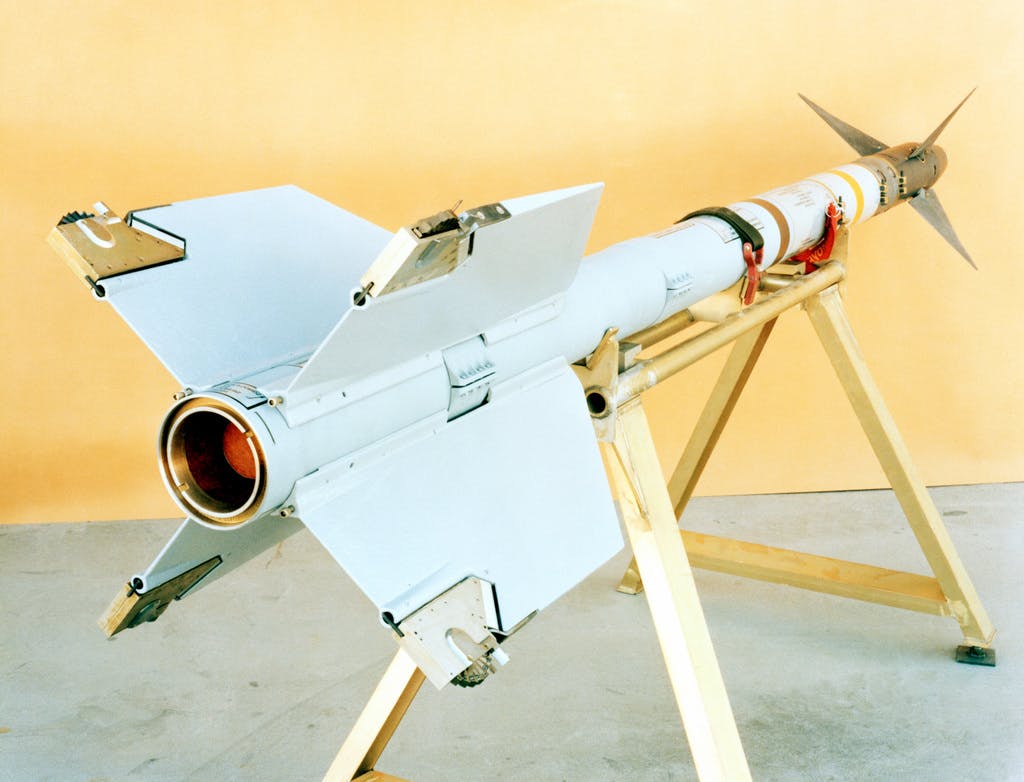
Blog
The term “heatseeker” has become ubiquitous in military aviation circles, but there was a time when the concept of a missile that could be fired from one airplane and then automatically and independently home in on an enemy aircraft’s hot engine was considered impossible, futuristic voodoo. Not only that, but the early proponents of such innovative, revolutionary technology were denied funding, ordered to stop work on the project, and effectively charged with technological blasphemy not seen since the days of Copernicus and Galileo.
This is the remarkable story of a nice-but-stubborn guy with three physics degrees who wouldn’t back down and developed the Sidewinder “heat-homing rocket” that would change the face of air warfare and become the most widely used air-to-air missile system in history.
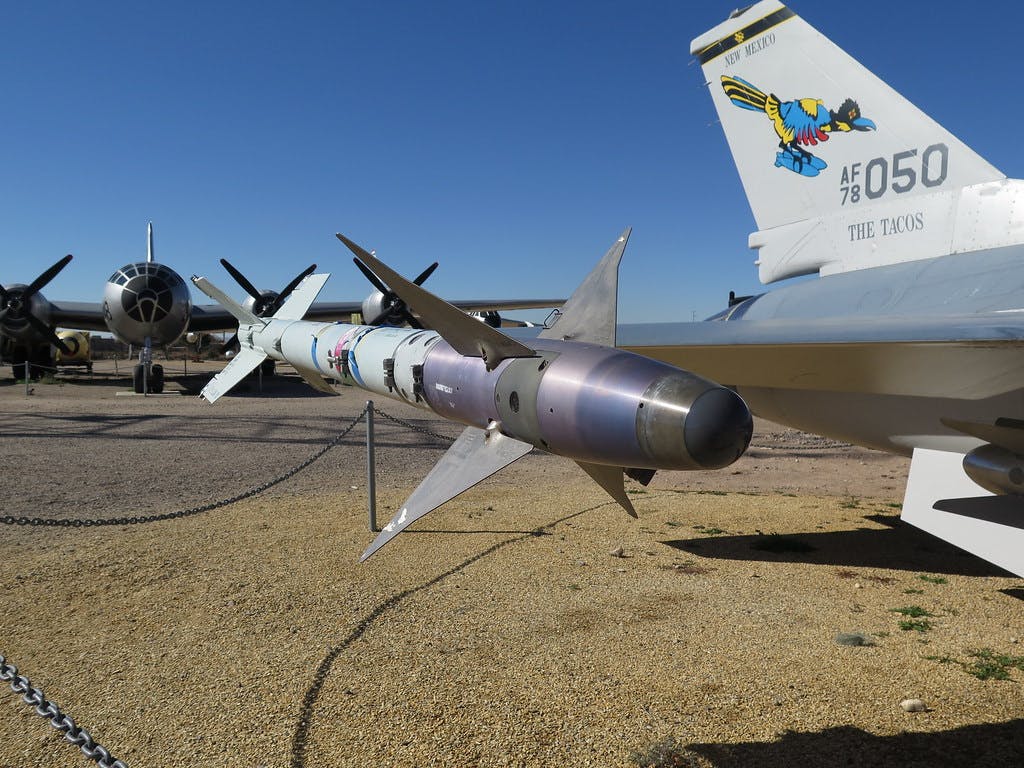
The early stages of a revolution in air combat
Although Germany had developed primitive self-guided “cruise” missiles in the V-1 and V-2, neither design was capable of tracking and homing in on a moving target, or being fired from one aircraft to hit another aircraft. Several combat kills had been made during WWII using aerially fired, unguided rockets, but this was a rare exception and was usually due to jamming or running out of ammunition in an aircraft’s primary air-to-air weapon of the time, the machine gun or cannon.
The development of the technology that would become the Sidewinder missile began just after WWII in 1946 at the Naval Ordnance Test Station (NOTS) at Inyokern, California (now called the Naval Air Weapons Station at China Lake). Dr. William B. McLean, the son of a Presbyterian minister and the aforementioned nice-but-stubborn guy, conceived the concept of an infrared-sensitive explosive fuze as part of an in-house research project he initially called “Local Fuze Project 602.” At the same time, the Air Force was working on their first serious attempts at an air-to-air missile, the Falcon, which was extremely complicated, expensive, and used semi-active radar homing (SARH) technology, that required the aircraft firing the missile to project a radar signal toward the enemy aircraft, that would bounce off and allow the missile to track that signal to the target. Theoretically.
As it progressed, McLean’s “fuze project” quickly morphed into an entirely new approach to guided missiles, a “heat-homing rocket” incorporating a nose piece with 4 control surfaces or fins that would be used to steer the missile, while the rear fins and rocket motor were fixed in place. The idea was that as the infrared sensors in the nose detected and tracked toward the heat source of the enemy aircraft’s exhaust, the missile would organically be guided by the fins whose motion was directed by the heat-sensitive nose cone, steering the missile until it either impacted the target or drew close enough that its proximity fuze fired and detonated the warhead. McLean knew he was into something good, but things were about to get weird.
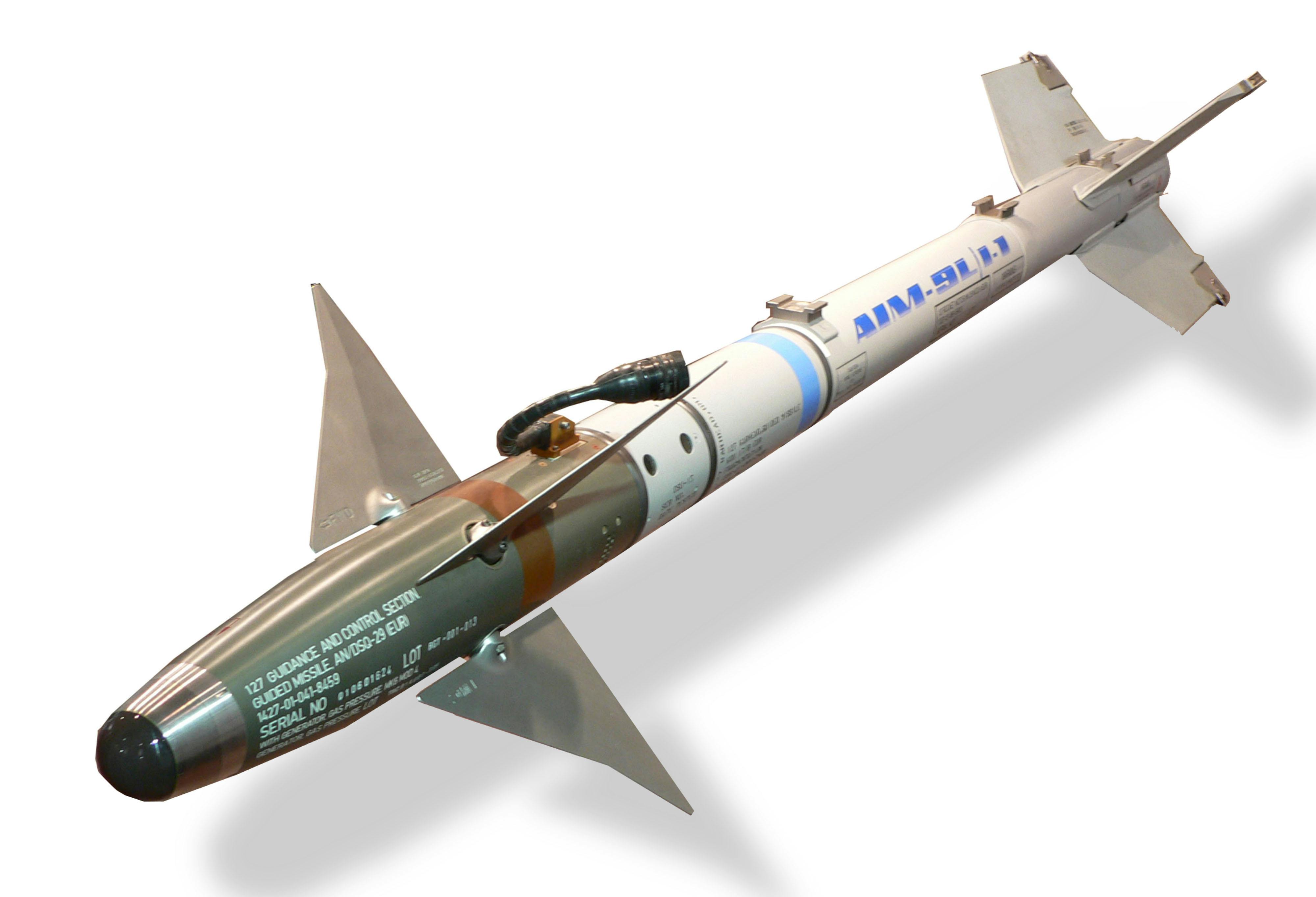
The Navy canceled the Sidewinder, but the idea wouldn’t die
As is sometimes the case in large, bureaucratic organizations, there was internal conflict between the Navy’s Bureau of Aeronautics (which had reign over the design, supply, and support of naval aircraft and related systems, including missiles, and mostly sub-contracted out their projects), and the Navy’s Bureau of Ordnance (which was in charge of aerial weapons, bombs, guns, and rockets, and mostly did projects in-house). Since a “missile” is a rocket with a guidance system capable of steering it, while a “rocket”—for the purposes of our military ordnance discussion here—is an unguided rocket-powered projectile that simply follows a ballistic path once launched, the Bureau of Aeronautics technically had authority over developing guided air-to-air missiles (or what they called Air Intercept Missiles—AIM), and was working on the AIM-4 Falcon as well as early ancestors of what would eventually become the AIM-7 Sparrow (both of which were radar-guided designs).
The Bureau of Aeronautics had invested a huge amount of time and money developing the Falcon, and objected to the NOTS team’s heatseeker project. How dare someone come up with a better, cheaper, more reliable idea! The nerve. Via the Department of Defense, the Bureau of Aeronautics had McLean’s fledgling “heat-homing rocket” project canceled.
However, McLean and his team were not to be dissuaded, and volunteered to continue work on the Sidewinder project in their spare time, using laboratory and independent funding where they could find it. McLean had worked on fuzes and weapons technology during WWII and was well-liked within the Bureau of Ordnance, which is one reason he was allowed to continue with this side project. His leadership style also fostered innovation and excellence. Rather than be stubbornly wedded to a single idea or approach, McLean actively encouraged competition among his sub-teams to come up with the best and most groundbreaking solutions to problems, and it worked. Over the next couple of years, his small team of dedicated, innovative engineers developed breakthrough sub-systems for power generation, stabilization, propulsion, and fire control, all in-house. One of the out-of-the box concepts utilized in the design of the Sidewinder was that it required no on-board batteries to provide electrical power. It had its own hot-gas generator that would burn for around 20 seconds, generating sufficient voltage to run all of its systems and actuate the steering fins in the nose until impact.
Another great example of McLean’s “simple, reliable, and inexpensive” design mantra was the AIM-9B’s “rollerons,” which is an elegantly simple way to gyroscopically stabilize the missile with small, air-driven “flywheels” that are incorporated into the rear edges of the stabilizing fins. These little wheels spin at up to 100,000 rpm and keep the missile from rotating too far from its longitudinal axis. If interested, Smarter Every Day did a great video on how the AIM-9’s rollerons work (as well as later variants’ “continuous rod” expanding warhead).
By 1951 the heat-homing missile was ready for presentation to the higher-ups within the Navy, and in 1952 it was officially recognized as the AIM-9, winning Dr. McLean a $25,000 prize for its conception and development and an award plaque from President Eisenhower. Sorry we tried to shut you down and ruin your life, old boy. Here’s something shiny.
Sources differ as to when the name “Sidewinder” was selected (either 1950 or 1952), but naming a heat-seeking missile after the Crotalus cerastes sidewinder rattlesnake, which uses infrared-sensing organs to detect its warm-blooded prey, was a stroke of genius.
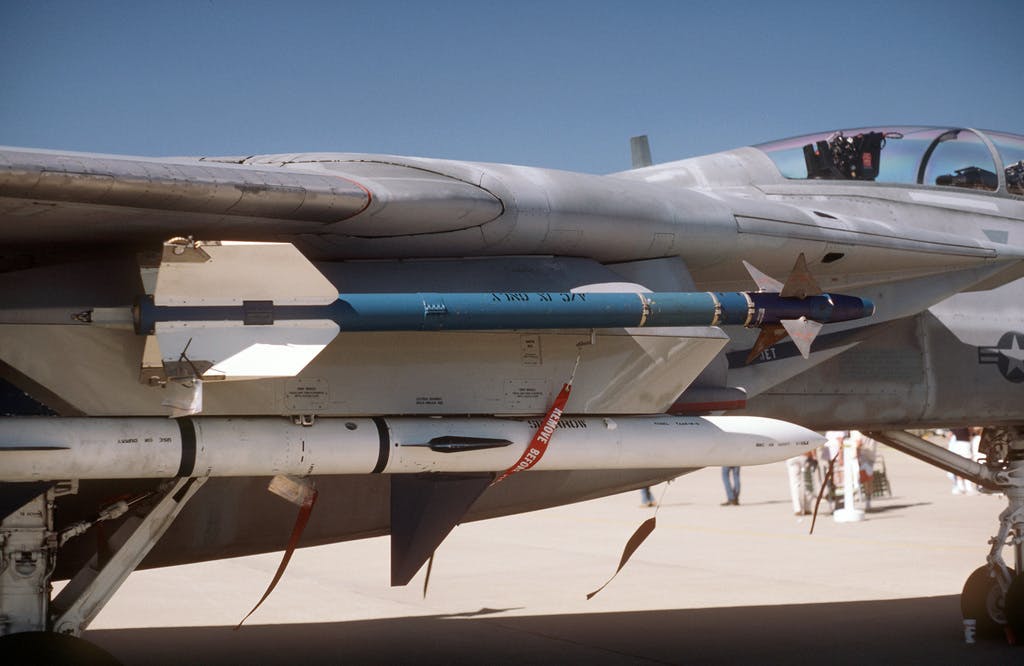
The Sidewinder proved superior to the Falcon in early testing and in combat
The Air Force had expressed a strong preference for the Falcon, but some proponents of the Sidewinder convinced the Air Force to have a shootoff between the two prevailing air-to-air weapon systems.
The Falcon team showed up with crate after crate of support gear, oscilloscopes, and other gizmos, along with 8 technicians to run the weapons system, while the Sidewinder team basically sent a few missiles and one dude carrying a pocket flashlight to check IR tracking and a box of Twinkies in case he got hungry. The results were pretty embarrassing for the Air Force (and the Navy’s Bureau of Aeronautics, who had tried to kill off the Sidewinder program), as during the evaluation the Falcon experienced multiple failures to fire due to technical problems, while the Sidewinder achieved several one-shot kills on aerial target drones. The AIM-9’s victory was decisive. The USAF began fielding the Sidewinder in a limited capacity on some aircraft, but still favored the Falcon for its theoretically superior performance.
During the Vietnam War, the Falcon (which the Air Force had stubbornly kept in its arsenal alongside the Sidewinder) proved so unreliable against fast-moving fighters, even after being modified to utilize either the SARH radar-guided targeting system or a heat-seeker setup similar to the Sidewinder’s, that pilots and commanders grew to hate it. USAF Colonel Robin Olds, who commanded the F-4D-equipped 8th Tactical Fighter Wing, said of the Falcon that he “loathed the damned useless things. . . In two missions I had fired seven or eight of the bloody things and not one [worked properly]. They were worse than I had anticipated. Sometimes they refused to launch; sometimes they just cruised off into the blue without guiding.”
Colonel Olds grew so frustrated with the Falcon’s poor combat performance that he issued an unauthorized order for his entire fighter wing to rewire their F-4D Phantoms to be able to carry and launch the more reliable AIM-9 Sidewinders. This field-expedient modification was not approved, but the results were so much better that eventually the entire USAF made the same decision.
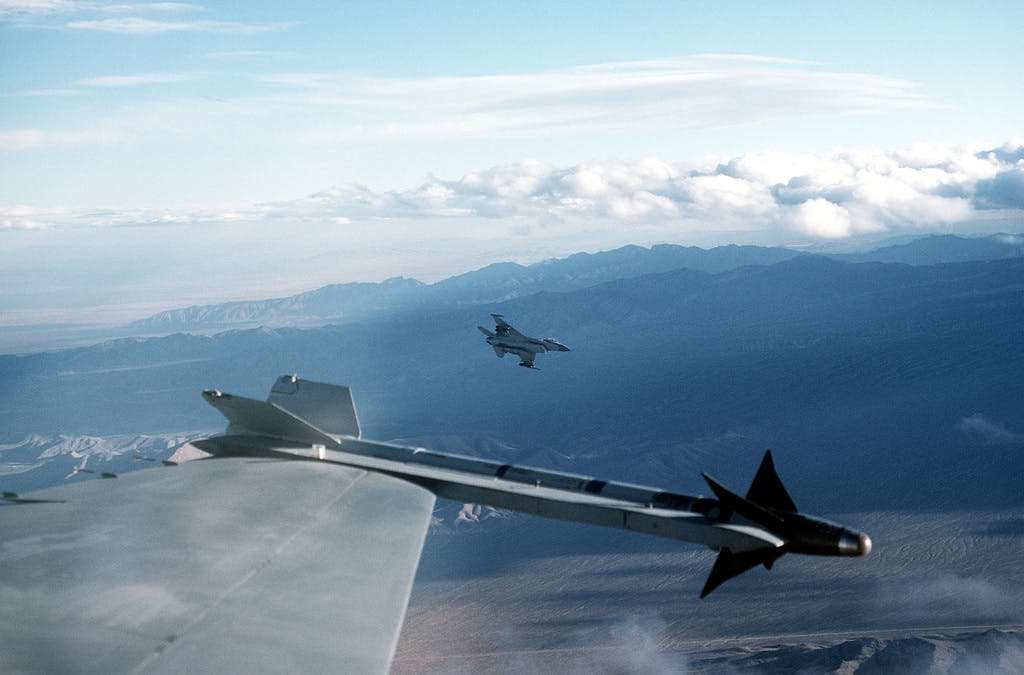
Oops! Dear enemies: Please enjoy our most advanced air-to-air technology
On September 24, 1958, F-86 Sabres flown by the Republic of China (Taiwan) clashed with China’s MiG-17s over the Straits of Formosa. This was the first instance of an air-to-air missile being used in combat, and the AIM-9B Sidewinder was the RoC’s missile of choice. The Sabres’ Sidewinders downed 4 MiGs in one sortie, proving the effectiveness of this new type of air combat weapon.
The celebrations were bittersweet, however, as four days later on September 28, 1958, during another dogfight, one of the RoC’s Sidewinders hit an enemy jet but failed to explode, and the pilot returned safely to base with the nasty heatseeker embedded in his fuselage. The Chinese (after some *ahem* gentle persuasion by the Russians) turned the missile over to the USSR, who were able to reverse-engineer their own version of the AIM-9, releasing it in 1961 as the Vympel K-13. Soviet engineers later said that the captured Sidewinder served as a “university course” in missile design and substantially improved Soviet air-to-air capabilities. You’re welcome.
Limitations of the Sidewinder, and generational improvements
Early versions of the AIM-9 were only effective when fired from behind an enemy jet, where the greatest exposure to engine exhaust heat allowed the IR tracking to function. Additionally, skilled enemy pilots found they could out-turn the early Sidewinders and live to fight another day. However, the AIM-9 weapons system was continually upgraded and improved over the years, with the -9B, D, E, G, H, and J variants demonstrating improved but still primarily rear-aspect targeting capabilities, and getting upgrades in electronics, cooling, targeting systems, propulsion, warheads, etc. The AIM-9C variant even utilized semi-active radar homing similar to the failed Falcon, but did it properly and proved extremely successful, with a 77% single-shot kill probability during Vietnam.
Later “all-aspect” versions such as the AIM-9L, M, P, and R could be fired from the sides, below, or from the front of enemy aircraft, and had better heat sensors, cooling, and other upgrades. Notably, the AIM-9X features an infrared-imaging focal-plane array seeker with a claimed 90-degree-off-boresight targeting capability, compatibility with helmet-mounted displays, and improved turning radius thanks to thrust-vectoring nozzle fins in the rear of the missile, rather than the aero-driven fins in the nose.
The latest Block II upgrades to the AIM-9X incorporate lock-on after launch (LOAL) capability, where a missile can be fired and then directed and locked onto a target by a late-gen fighter with 360-degree targeting capability such as the F-35 or F-22. The Block II is also more resistant to enemy flare countermeasures.
The Sidewinder family has become the most widely used air-to-air missile in the arsenal of America and its allies, with over 110,000 being produced to date. It also has proven the most effective, having the most kills of any air-to-air missile, with an estimated 270+ aircraft shot down.
How much does an AIM-9 Sidewinder missile cost?
The Sidewinder has been known from the start to be a simple, reliable, low-cost air-to-air missile, but of course that “low cost” is a relative term. The latest Navy budgetary documentation available estimates FY2023 flyaway costs for the current AIM-9X Block II Sidewinder at $455,000 each. So, not exactly chicken feed. However, the same source cites unit flyaway costs for the AIM-120D AMRAAM radar-guided missile at $940,500 for FY2023, so with the Sidewinder, you get two kablooies for the price of one, which is a relative bargain.
The AIM-9X departs from McClean’s original design and uses thrust-vector control along with aero control to allow more aggressive turning and reliable performance. It also has an enhanced gimbal angle for greatly enhanced off-boresight engagement zones. However, the previous, less-complicated, (and cheaper) aero/fin-steered generations of the AIM-9 are still being produced, and work so well in today’s world of radar-jamming superfighters and electronic warfare that they’ll likely still be relevant and effective in the world’s aerial battlefield for many years to come.
Raytheon is currently building the AIM-9X Block II, and Boeing won a 2010 contract to support the Sidewinder and keep it up to date until at least 2055. So it’s clear that Dr. McClean’s brainchild has dramatically changed the face of air-to-air combat. We wonder if, at the time the Navy canceled his project, he envisioned his invention still being produced and used by the US and its allies 100 years later. Not many inventors can make such a claim.
How does the AIM-9 Sidewinder handle the thermal management challenges of being a heat-seeking missile?
Turns out, one of our senior electrical engineers, Russ Hurst, actually worked on the Sidewinder missile. Here's what he told us about the program generally, and the missile's thermal challenges specifically:
The Sidewinder was developed at China Lake, CA and is the Naval Air Warfare Center's biggest claim to fame. That and glow sticks, which were also invented there. The early versions are heat seeking (IR), so, in order to be able to "see" heat, the sensor has to be cooled below the background temperature of the field of view. This provides the contrast needed for input to the guidance section. In AIM-9R, the sensor is cooled using a high pressure vessel (>5000psi) of Argon gas. As the depressurized Argon is directed at the back of the sensor, it cools the substrate of the sensor. There is enough gas in the vessel to support cooling for the duration of flight.
–By Jeff Davis, Intergalactic Scribe, with a cameo from Russ Page, Intergalactic Electrical Engineering Guru
Sources:
https://www.secnav.navy.mil/fmc/fmb/Documents/21pres/WPN_Book.pdf
https://en.wikipedia.org/wiki/AIM-9_Sidewinder
https://en.wikipedia.org/wiki/AIM-4_Falcon